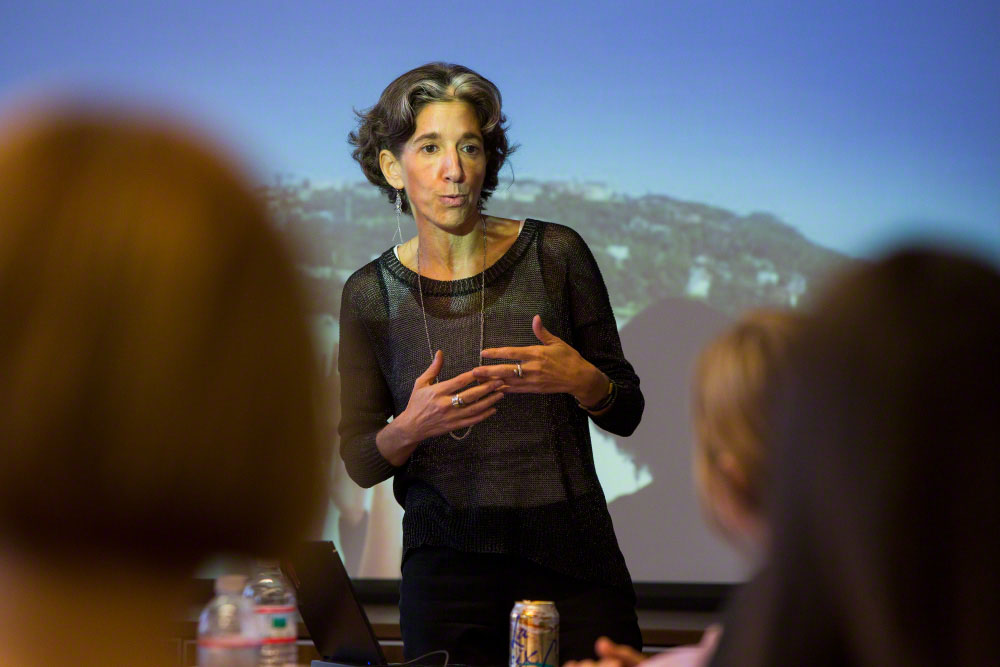A culture of giving back is built into DePaul University’s mission. In one undergraduate marketing class at the Driehaus College of Business, that idea is also part of the curriculum.
Students in MKT 377: Fundamentals of Sales & Networking learn and practice sales concepts by “selling” for the Sid Feldman Legacy Fund, which creates scholarships for Chicago Public Schools students to attend DePaul. The fund is named after Chicago businessman Sid Feldman, who believed in the power and necessity of education.
“Through this project students not only learn to sell and to provide financial means for someone to attend DePaul, but they come to the realization that they could truly make a difference in a person’s life,” says Adjunct Professor Clancy Ryan (BUS ’96, MBA ’02), who created and teaches the class each quarter and is the director of student relations for DePaul’s Center for Sales Leadership.
Early on, students in MKT 377 would pitch for DePaul’s sales programs or for community partners, such as StreetWise. The class switched to promoting the scholarship fund in winter 2010 and now has a yearly goal of raising $75,000 and funding two partial scholarships. For Fiscal Year 2013-14, ending with the 2014 spring quarter class, MKT 377 students raised $109,979.62.
Students Helping Students
The class introduces sales concepts and challenges students to polish their skills through individual and group work. Each quarter, students break into teams of four and are mentored by a sales team manager, a former student who completed the same class. Bringing alumni into the classroom allows students to learn from someone who has been in the same situation.
“It’s this idea of students mentoring students who are helping students,” explains Sarah Laggos (CSH ’05, LAS MA ’07), who began co-directing the fund while she worked at the Center for Sales Leadership. Now Laggos remains hands-on with managing the fund while being based in California as Alumni, Annual Fund & Corporate Relations Director at Santa Rosa Junior College.
Zaharoula Asimos (BUS ’12) was a sales team manager for four quarters after graduating. She has helped to coach the sales team leaders and serves on the effort’s advisory board. She says she appreciated how Ryan led class by example: “He showed us that you can have a corporate job and do something you love on the side, for the pure passion in your heart.”
Sales team manager Semir Delic (BUS ’11) returned because he believed in the fund and the skills the class taught him. “Everything that I learned in class I was able to apply in the real world while helping other students attend DePaul,” he says.
The advent of sales team managers shows how the course is constantly changing. One year when Ryan taught an MBA-level course on leading business development, he asked the graduate students how they would lead a team of undergraduates to success in a fundraising project. That feedback was implemented into MKT 377. In addition, each quarter the sales team managers are asked to discuss what does and doesn’t work so the course can continue to adapt.
Raising Money, Learning Lessons
Just like a sales force for a company, each student in class is given a sales quota. For FY13-14, the goals were higher: Each student had to bring in $300, with $150 raised individually and $150 raised with their teams. Within four years, the per-student fundraising average has more than doubled, from $220 in 2010 to $537 last year.
Students can raise money however they see fit, usually in a combination of pitching to friends and family and running team events. Those events can be anything from special sales days at local restaurants, such as the Chipotle nearest DePaul’s Loop Campus, to bake sales or other ideas. The challenge comes in picking something that can be implemented in just 10 weeks.
Students see the difference they’re making when past scholarship recipients—now DePaul students themselves—come to class and talk about what receiving the Sid Feldman scholarship meant to them.
“That is the thing that flips the light bulb on: These are real students at DePaul, and without this scholarship they would not be able to be here,” Laggos says. Videos of scholarship recipients also are available on the fund’s website.
Koemi Valencia (BUS ’14) says being a sales team manager is a learning experience, one where she can learn from the students while also helping them succeed. “Having that dual-learning relationship while keeping this amazing cause alive—helping CPS students go to college—is almost an invaluable experience.”
Even as the professor, Ryan says he gains new insight from each class. “I tell the students that they’ll teach me more in 10 weeks than I’ll ever be able to teach them.”



